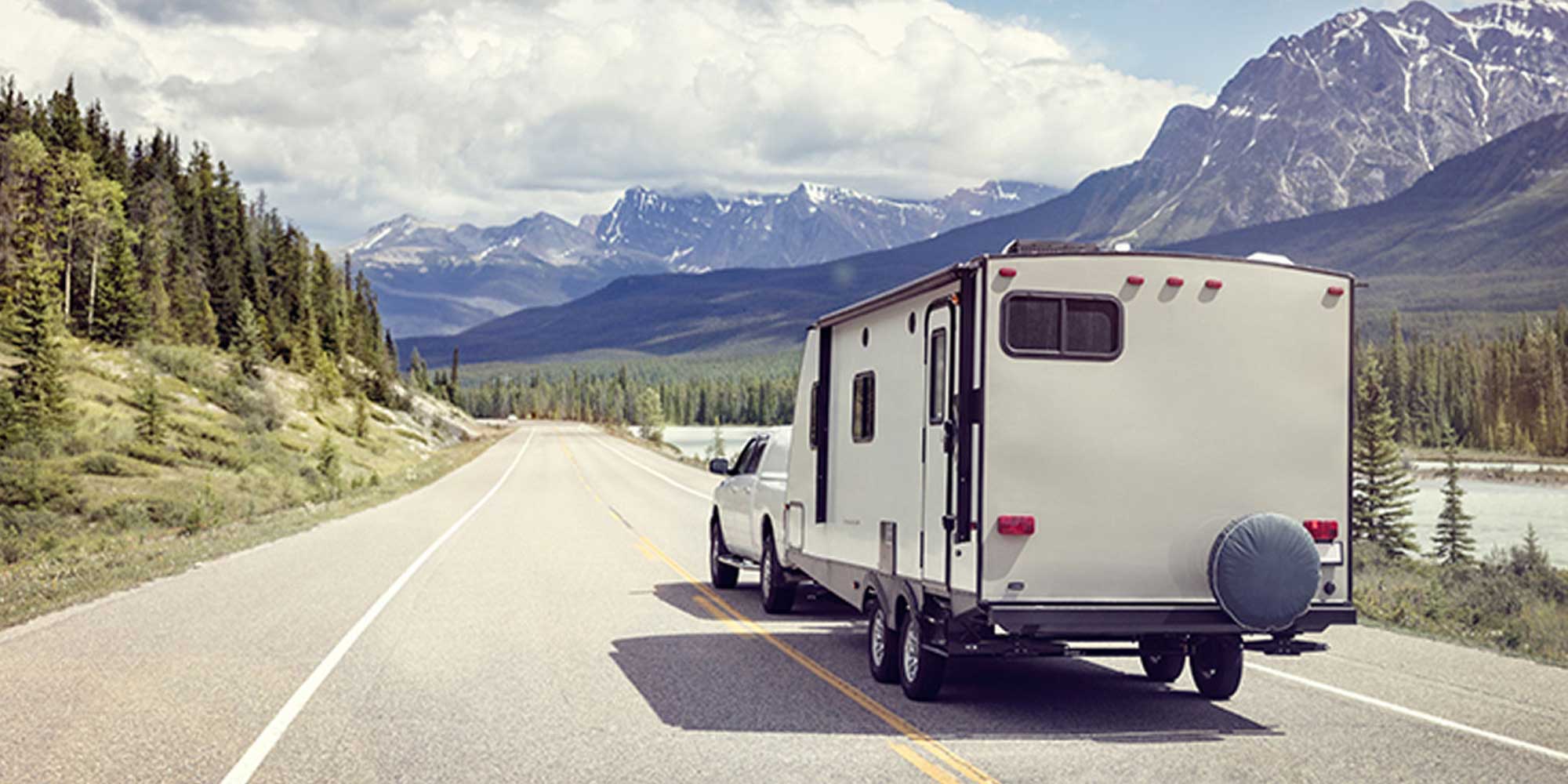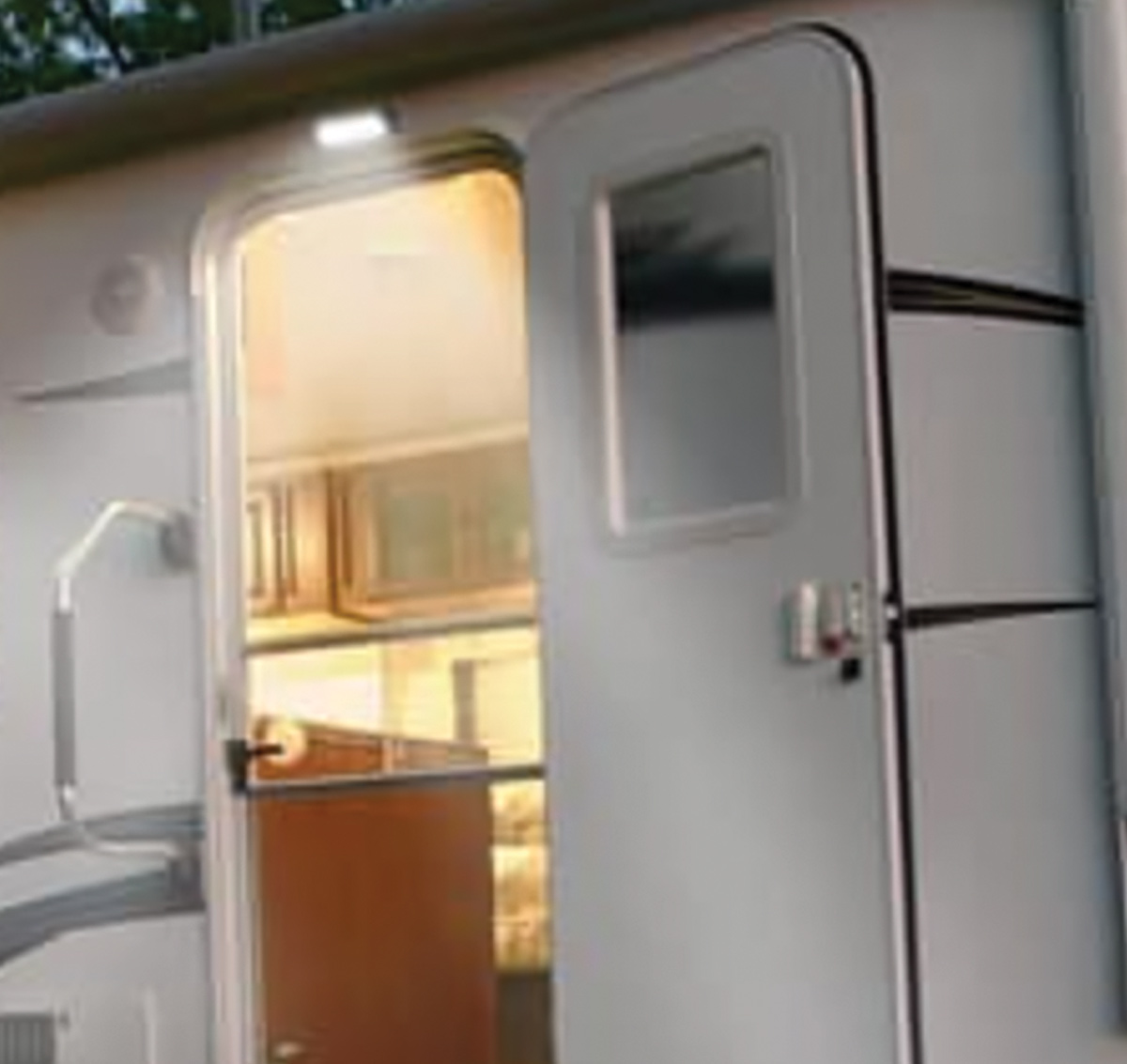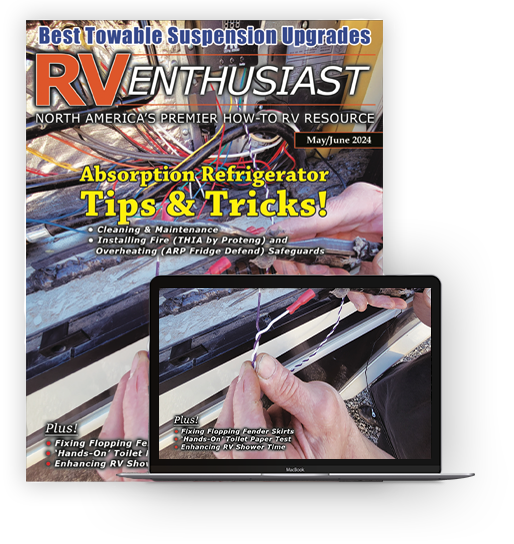Technically Speaking – Q & A: November 2021

Trailer Towing Angst
Does the anxiety of pulling a trailer ever get better? I’m just the passenger most of the time. I don’t know how my husband does it. I think I drive him crazy.
— Jennifer Siebeck
There are a number of ways towing can cause anxiety — from hitching to towing and backing/parking. Today’s vehicles are equipped with back-up cameras that can make hitching up a whole lot easier — and Ford offers an option to do it for you. But if your vehicle is older and/or does not these features, there are a number of aftermarket cameras on Amazon and etrailer.com that will do the job. If it’s backing into campsites that freaks you out, go with a product like the Hopkins vueSMART wireless trailer camera, which will provide a view from the back of the trailer.
Towing a trailer is something that makes a lot of folks uneasy, but that’s usually because the trailer hasn’t been properly loaded, the hitch not correctly set up, or the trailer is too heavy for the truck. Travel trailers need at least 10% of the trailer’s total weight over the hitch or they can suffer from instability. As mentioned above, we cover this topic in detail in the article, “Worth the Weight” in the May issue. Use a correctly rated weight-distributing hitch and make sure that it is properly set up (see Travel Trailer Hitches and Hitch Ratings, also in the May issue). Finally, get yourself a sway control if you don’t already have one — this will go a long way towards making your travels angst-free.
— Chris Hemer
Front Furnace on the Fritz
I have a Fleetwood Southwind Class A with two furnaces, and all of a sudden the front furnace and refrigerator won’t light on LP-gas. The range and rear furnace are fine. They are trying to light — the furnace fan turns on and I can hear it click, and the fridge clicks — but nothing.
— Jerry Sanders
There are a number of possibilities to look at, but you should focus on a system issue rather than an appliance problem. Although the rear furnace and stove are working, troubleshooting any appliance starts with making sure the energy powering the appliance is functioning properly. Start by pressure-testing the LP-gas system using a manometer (a certified RV or propane gas technician can help with this) to make sure the regulator is providing adequate pressure (11 inches w.c.) and flow. If the malfunctioning appliances are in the same slideout, it could be a crimped hose.
Next, test the 12-volt DC electrical system for proper voltage at each of the appliances. Even though the affected appliances are turning on, low voltage can still cause them to malfunction.
Monitor LP-gas pressure and 12-volt DC power under load. Remember, static voltage or pressure (nothing operating) can look fine, but can drop off when appliances are operated.
Once the power systems have been verified, it’s time to check the appliances. In this case, I think you’ll find a problem in the LP-gas and/or 12-volt DC systems
— Chris Hemer

Frying the Electrical System
I bought an RV and had solar panels, a second RV battery and a 2,000-watt inverter installed. The problem is, when we run the air fryer (1,550 watts), everything shuts off after running the air fryer for about 15 minutes. Any idea what the problem could be?
— Tim Strathern
You didn’t mention the battery type, so when you say “everything” shuts off, it sounds like the 12-volt DC system shuts down altogether, which may likely be a lithium battery management system (BMS) shutting down to protect against discharging too quickly. However, flooded lead acid (FLA) batteries can also cause a shutdown.
There are a couple of possibilities, so I wanted to bring in a colleague, electrical engineer Mike Sokol, to help sort this out:
“Most FLA batteries are rated at a C/20 discharge rate. That is, a 100 amp-hour battery is rated at 5 amps for 20 hours of discharge. It appears they’re discharging this battery at a rate of C/2 or higher, which will cause all kinds of internal heating and increased impedance. That will cause a rapid drop in voltage, even though you might think there was amp-hour capacity left. Lithium-iron phosphate batteries don’t exhibit these problems. A pair of lithium batteries will easily run this load, but attempting this with FLA batteries will be iffy. You might get it done with four 6-volt FLA batteries, but most 12-volt batteries aren’t really deep-cycle and will exhibit this same shutdown effect. Once you discharge faster than C/5 (20 amps for a 100 amp-hour battery) all kinds of derating must be applied. I don’t think what you’re attempting will work with lead-acid batteries, and everything must be perfect to even allow lithium batteries to discharge at this rate. In any event, getting a voltmeter on the battery would show if the voltage is going below the inverter low-voltage cutoff point. You need to get meters on it to evaluate what’s actually happening.”
— Mike Sokol
So, a few things to check out. First, the batteries must be fully charged with no other loads on the system. Second, verify that the cable size and run are correct from the batteries to the inverter. Undersized cable and a heavy load can cause a lithium BMS to shut down and/or the inverter to overload and shut down. Cable size makes a huge difference. If you’re using lithium batteries, check to see for the maximum current output rating, and that it’s not being exceeded. A DC ammeter clamp on the cable coming off the battery bank can be helpful to establish load values. Monitoring the voltage at 1) the inverter, and 2) at the batteries while the load is applied will also be informative.
If you’re not going with lithium batteries, more, bigger banks of 6-volt batteries and heavier cabling will help to ensure you can maintain power.
— Chris Dougherty
Sizing Up a New Travel Trailer
Hey guys, I’m looking into getting a travel trailer about 30 feet and I was wondering what’s the best truck to get in order to pull one of those. Any help you can provide would be appreciated.
— Doug Morris
It’s not just the size of the trailer you need to be concerned with, but the weight. By your letter, I’m going to assume that you haven’t purchased the truck or the trailer yet. If that’s the case, start shopping for the travel trailer first — find the one (or ones) you like, and then get the gross vehicle weight rating (GVWR) from the placard on/in the trailer. After you purchase the trailer, find a truck or SUV that can tow at least that figure (more is always better) and you should be fine. If you’re getting the truck first, go with something that can tow at least 10,000 pounds—that should cover the bulk of travel trailers. Then, go shopping for a travel trailer with a GVWR not exceeding that figure. For more information, see the article “Worth the Weight” in the May issue of RV Enthusiast.
— Chris Hemer

Flickering Light
I have a 2019 Forest River Class C motorhome Sunseeker 3250 DELS. The light over the door is flickering when you open the door. I can turn it off but I would like to fix it. My dealer wants $92 just to look at it. Can you help?
— Howard Harris
The first thing to look at is the door switch. Over time, these switches get corroded and don’t make a good contact. Try manually wiggling the plunger to see if that makes the problem occur — it could be as simple as a loose solderless connector or the contact is dirty. Removing the switch is the best way to diagnose and clean it. Make sure the power is off before you remove it, so you don’t short the switch on the door frame and blow a fuse, which you’ll have to replace in that scenario.
If you don’t discover an issue with the switch and the wiring connection, it’s possible that the light is failing. I think you should have an LED version, and sometimes the LED board will go bad. The light can be tested using a multimeter or test light to confirm that the power feed is stable. If the power is good while opening the door, replace the lamp. If you have a magnetic switch, the connection may be possible cause, as well as the positioning of the magnet, or there can be an internal problem in the switch. The only other solution is to replace the switch if it’s acting up
— Chris Dougherty
Wet Walls and Windows
I have severe condensation in my fifth-wheel that I can’t seem to correct. We are full-timers, we’re not using the propane heat, we have moisture bags hanging and fans running — but it’s still a big issue, especially in my cupboards and closets. I’m afraid of mold and mildew developing.
— David and Sheila Samuals
Condensation is inevitable in an RV in cold conditions, just like it can be in a house, except the problem can be amplified due to the small space and the way it’s built. Everything we do — from washing, to cooking to breathing — is adding significant humidity to the interior atmosphere of the RV. As this interacts with the cold walls and windows, these become dehumidifiers, converting the water vapor to liquid and even frost at times. It’s not generally something you can just get rid of once and you’re done. You have to keep on top of it throughout the colder seasons, but the drier you make the RV earlier in the season, the less chance of developing condensation.

For full-timers, I really recommend an electric dehumidifier — and run it pretty much all the time during cold weather. Get as much moisture out of the air possible and you really won’t have to adjust your lifestyle at all — cook and clean to your heart’s content!
Ventilation is important when a dehumidifier isn’t an option. While the hanging bags and tubs are OK, they’re not very efficient, are transient and need to be replaced/serviced. They work better when the RV is in storage. Venting the moist air out and replacing it with cooler, drier air from outside is the best bet. Keep windows and roof vents cracked open when possible.
An open burning propane flame, like on your stove, also creates moisture to the inside the rig; however, your furnace exhausts to the outside — it will not affect the humidity level inside. In fact, the air flow from the furnace helps keep the hidden areas of the RV warm and, paired with a dehumidifier, everything gets dried out more effectively. If you have dual-pane windows, that helps a great deal. If not, you can use inside window kits like those from Frost King to improve insulation and reduce condensation. Keeping cabinets and closets cracked open is also helpful in keeping the inside warmer. Some folks have even designed computer fan systems to circulate air in these spaces to help keep the plumbing warm.
— Chris Dougherty
With the summer season in full swing we're proud to present our latest issue of RV Enthusiast! The May/June issue covers the Best Towable Suspension Upgrades, Absorption Refrigerator Tips & Tricks, Enhancing RV Shower Time, PLUS so much more!
Already a Subscriber? Click here for Access to the Full Issues.

